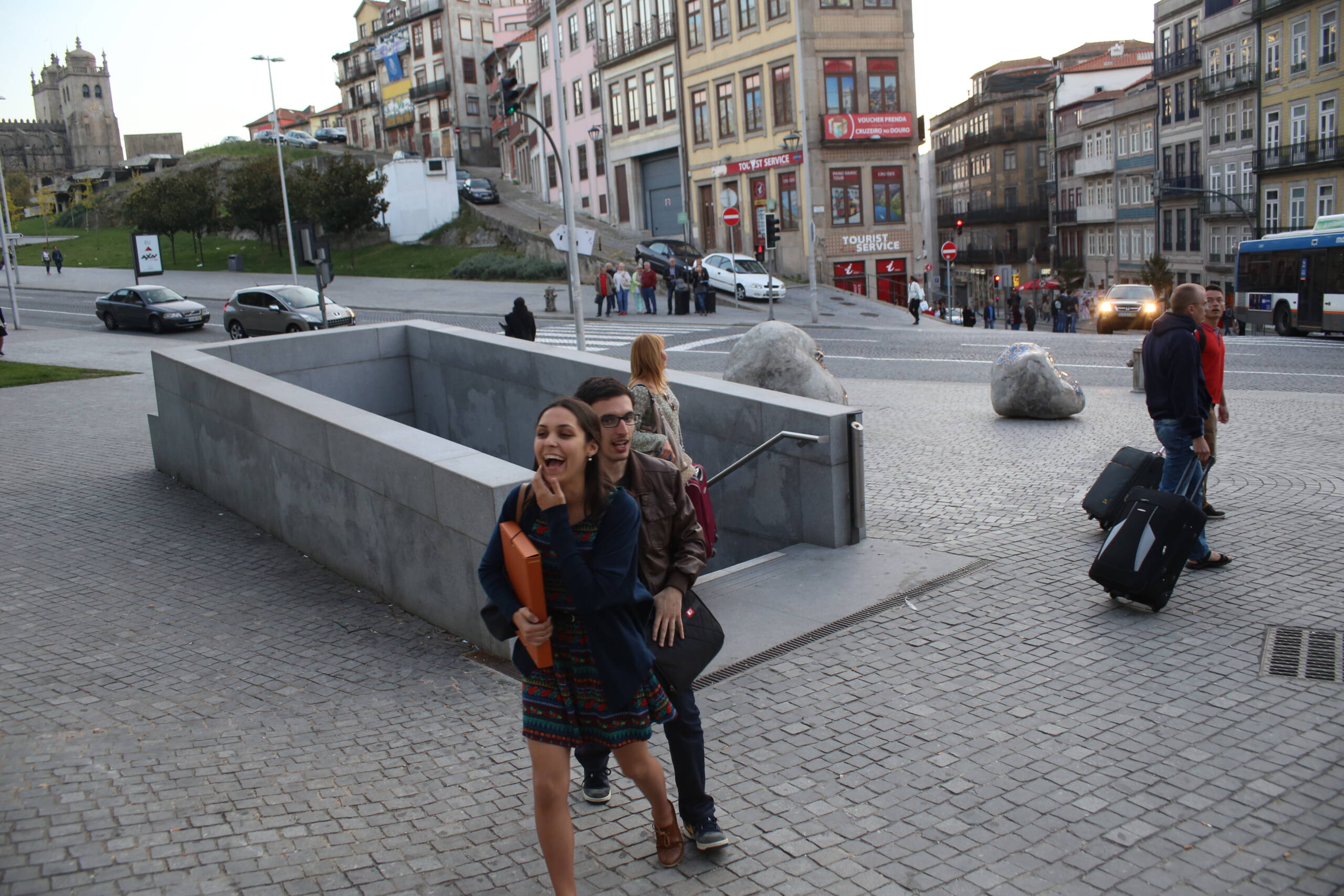There’s something magnetic about this photo, the kind of captured instant that feels alive long after the shutter has clicked. At the very front, a young woman is bursting with laughter, her smile wide and unrestrained, her hand brushing her chin in a half-playful gesture as though she’s just heard something outrageous or remembered a private joke that only the street itself could have delivered. She’s holding a large orange folder, the color catching the fading daylight and adding a sudden burst of brightness against the muted grays of stone and pavement. Right behind her, a young man follows, half hidden, his grin softer, more knowing—as if he’s both the cause and the keeper of her laughter. Together they climb the steps of a subterranean metro entrance, emerging into the noisy breath of the city. The juxtaposition is almost cinematic: the underground world behind them, the wide expanse of Porto’s old streets opening ahead.

The background is a layered patchwork of Porto itself. Rows of tall, narrow houses lean toward the street, painted in shades of faded yellow, peach, and grey, their iron balconies clinging precariously, some with laundry draped like flags, others shuttered tight as if guarding secrets. The pavements are cobbled with centuries of footsteps, uneven and stubborn, and above it all, perched on the left, the cathedral stands as a silent overseer, its stone walls carrying the weight of a thousand years. You can almost hear the echo of church bells mixed with the distant hum of a bus engine and the rolling drag of suitcases over stone. Two travelers pull their luggage across the square, their faces turned toward each other in mid-conversation, unaware that they are adding to the tapestry of this moment—modern wanderers in a medieval city.
What really comes through is the mood. Porto here feels like it’s caught between past and present, a little chaotic, a little improvised, but pulsing with authenticity. The air carries the scent of damp stone from the river nearby, mingled with the faint whiff of roasted chestnuts from a cart not pictured but easy to imagine. A group of people gathers on the corner near the traffic light, some looking like they’re waiting for directions, others lost in the act of waiting itself. Enormous boulders placed in the square like sculptures add an odd, playful contrast, as though someone decided the rigid geometry of the urban layout needed a bit of disruption. Evening is just beginning to lean into the city, the light softening into a moody haze, shadows lengthening, the façades glowing faintly as if holding onto the last of the sun.
This single frame captures the essence of Porto not as a postcard image but as a lived, unpredictable rhythm. The city doesn’t pretend to be polished or symmetrical; instead it thrives on the energy of people passing through—students rushing with folders, couples pulling luggage, buses exhaling as they stop, locals cutting across cobblestones with quiet purpose. And in the middle of it all, laughter erupts, raw and joyful, reminding you that Porto is not just stone and history, but also pulse, breath, and fleeting human moments that light up its streets.
Leave a Reply